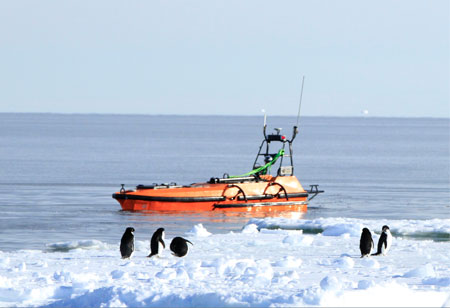THANK YOU FOR SUBSCRIBING
Humans are Replaced With these USVs in Hydrographic Surveying
The physical exterior dimensions of the vehicle span about 200 x 70 x 40 cm. The USV is equipped with two propellers that produce 80 pounds of thrust force.

By
Apac CIOOutlook | Wednesday, August 14, 2019
Stay ahead of the industry with exclusive feature stories on the top companies, expert insights and the latest news delivered straight to your inbox. Subscribe today.
A new unmanned surface vehicle built for the Chinese market has unraveled new arenas for usage with an open and low-cost platform to measure water current and direction. The USV is integrated with Doppler instrumentation on the transporter to help meet user requirements for ocean or hydrographic surveying.
FREMONT, CA: Ocean surveying or hydrographic survey has an allotted place in the economy, security, and societal purposes. The survey is essential as it demonstrates how to map a safer and faster way possible. USV, short for Unmanned Surface Vehicle, is an advanced technology of transporters for sensors that is necessary to carry out a hydrographic survey.
The new USV is designed like an IPC (Industrial Personal Computer) which is dependent on the central operation platform, it utilizes a remote desktop and a remote control technique, to communicate with all the instruments installed for the testing. It means that the vehicle provides an open and low-cost platform for clients who want to carry out multiple tasks at the same time. Users can also conduct the hydrology and water quality measurement while collecting the water samples all at once. Furthermore, a USV can carry other appropriate instruments, for example, in geomorphology.
The physical exterior dimensions of the vehicle span about 200 x 70 x 40 cm. The USV is equipped with two propellers that produce 80 pounds of thrust force. China’s USV utilizes the Signature VM system, which consists of the Signature500 ADCP. The USV has features like the EXO system for water quality measurement and has a high-definition camera sensor. It can be remotely or manually controlled or be programmed to sail automatically by itself. The design of the vehicle can be customized accordingly to various requirements from end-users.
The demand for USVs in China is extensively growing, and China posses to be a significant market by itself. With companies already launching the Signature VM systems in the country, the opportunity to unravel the vessel-mounted current measurement market in China needs to be held tightly.
The USV platform is mainly built to assists users in handling multiple tasks, and to conduct the experimentation and operations at low cost. The future for the USV in hydrographic surveying looks bright as the development to build the ultimate automatic and intelligent Vehicle equipped with groundbreaking systems.





